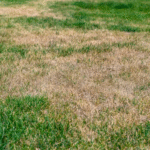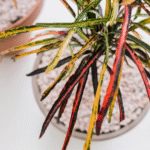Your lawn is like a living carpet for your home. It needs care, just like any other part of your garden. Sometimes your grass starts showing signs that something is wrong. These signs can be easy to miss at first, but if you catch them early, you can save your lawn before it gets worse.
Here are 8 common signs that your grass is in trouble, and what you can do to fix it fast.
1. Brown or Yellow Patches
If your lawn has dry or discolored patches, this could mean a few things. It might be a sign of a fungal disease, pet urine, pests like grubs, or lack of water.
What to do:
- Water deeply and regularly
- Check for pests under the soil
- Use a lawn-safe fungicide if needed
- If pets are causing it, try training them to go in one spot
2. Lots of Weeds Growing
A healthy lawn makes it hard for weeds to grow. But if your grass is thin or weak, weeds like dandelions, clover, or crabgrass take over quickly.
What to do:
- Pull weeds by hand if there aren’t too many
- Use a weed control product that’s safe for grass
- Improve your soil by fertilizing and overseeding
3. Grass Feels Spongy or Mushy
If your lawn feels soft and spongy underfoot, it could mean thatch buildup or too much water. Thatch is a thick layer of dead grass that can block air and nutrients.
What to do:
- Dethatch your lawn using a rake or dethatcher
- Aerate your lawn to help water and air get through
- Water less often, but more deeply
4. Bare or Thin Spots
If parts of your lawn have little or no grass, it may be due to foot traffic, pests, or poor soil.
What to do:
- Loosen the soil and add compost
- Reseed the area in spring or fall
- Keep off the area until the new grass grows
5. Wilting or Drooping Grass Blades
When your grass looks like it’s bending over or drying up, it may not be getting enough water—or it’s getting too much heat.
What to do:
- Water early in the morning, about 1 inch per week
- Raise your mower height so the grass stays cooler
- Avoid mowing during the hottest part of the day
6. Too Many Bugs or Animals Digging
If you notice birds or animals digging in your yard, they might be looking for grubs—white bugs that eat your grass roots.
What to do:
- Check for grubs by lifting part of the turf
- Use natural grub control or a lawn-safe pesticide
- Keep your soil healthy to prevent future infestations
7. Grass Doesn’t Bounce Back After You Walk on It
Healthy grass should spring back when you step on it. If it stays flat or looks limp, your lawn might be too dry or the roots may be weak.
What to do:
- Water deeply and less often
- Don’t cut the grass too short
- Fertilize with a balanced lawn feed
8. Lawn Has Too Much Thatch
Thatch is the layer of old roots, stems, and dead grass between the soil and the green grass. A little is fine, but too much chokes your lawn.
What to do:
- If the thatch is thicker than ½ inch, it’s time to dethatch
- Use a rake or rent a dethatcher
- Aerate your lawn to keep thatch under control
Simple Tips to Keep Your Lawn Healthy
- Mow Smart: Don’t cut more than ⅓ of the grass blade at once
- Water Wisely: Water early in the day, not at night
- Fertilize Carefully: Use the right fertilizer for your grass type
- Aerate Once a Year: Helps roots grow deeper
- Overseed: Fill in thin spots every fall or spring
Summary Table
| Lawn Problem | What It Means | What to Do |
|---|---|---|
| Brown or yellow patches | Fungal disease or grubs | Water well, use fungicide or treat pests |
| Lots of weeds | Weak lawn, poor soil | Pull weeds, fertilize, reseed |
| Spongy or mushy grass | Too much thatch or water | Dethatch, aerate, adjust watering |
| Bare spots | Heavy traffic or poor soil | Reseed and improve soil |
| Wilting grass | Heat or not enough water | Water deeply, mow higher |
| Animal digging | Grubs under the soil | Apply grub treatment |
| Limp grass after walking | Weak roots or dry soil | Deep watering, avoid short mowing |
| Too much thatch | Old grass blocking soil | Dethatch and aerate regularly |
Final Thoughts
Your lawn gives clues when something is wrong. By learning to spot these early signs, you can take simple steps to fix them before the damage spreads. Regular watering, mowing, feeding, and aerating can go a long way in keeping your grass green, soft, and healthy.







Leave a Reply